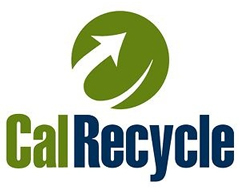Environmental
Here at Ceilume, we have been committed to providing our customers with high quality, environmentally friendly products since we first opened our doors, and have dedicated ourselves to preserving natural resources by minimizing environmental impacts associated with manufacturing. How dedicated are we? In the early days, when recycling was still a foreign concept to most, our company founder regularly hauled manufacturing scrap over five hundred miles with a small flatbed and a trailer, just so that material could be reborn as new plastic.
But our commitment to recycling doesn't stop with raw materials. When we moved to Graton, California in the early nineteen eighties, our new home was an old Gravenstein apple processing plant on its last legs. With care and patience we rehabilitated it into a safe, modern facility that has retained its character as a classic structure, while maintaining its place of importance within our community.

With an extensive program to reuse materials that might otherwise end up in a landfill, we combine post-manufacture waste with recycled ceiling tiles, converting them into durable products that can, themselves, be recycled into more... you guessed it... ceiling tiles!
This is the holy grail of sustainability.
How do we do it? To create our line of 100% post-manufacturing and post-consumer recycled tiles, we take manufacturing scrap and ceiling tiles returned to us for recycling and carefully sort it to ensure cleanliness and consistency. Then we feed it into specialized granulators, which converts it to confetti-like bits of plastic - a process that produces zero waste. This recycled feedstock is then processed into sheet form and placed on rolls, resulting in our Random Gray, 100% recycled material.

And these 100% post-manufacturing and post-consumer recycled tiles, like all Ceilume tiles, are made right here in the USA, providing good jobs and eliminating the negative impacts of international shipping.
Additionally, as compared to the mineral fiber products we see in so many ceilings, Ceilume tiles require 75% less raw material during the manufacturing process, weigh less, nest better, and require roughly one quarter the cargo space, making shipping far more efficient and less impactful on the planet.
Walk around our plant and you'll find that we have converted all of our fluorescent lighting to high-efficiency LED, we've upgraded all of our forming heaters to reduce energy consumption, we even recirculate naturally cooled air from our sub-basement to help temperature control our computer server room.
At Ceilume, we live sustainably every day.
Sustainability, Durability, and Ceilume - Our Pledge to the Planet
Your Ceilume ceiling tiles and panels will last a long, long time. We recently had a customer send us pictures of Ceilume tiles that had been in their ceiling for over fifty years. But one day, for whatever reason, you may want to replace them. When you do, we want them back. Why? Because we can turn them into brand new ceiling tiles that can serve another customer for decades to come. Disposable plastics, without a reliable recycling stream, are a bad idea and always have been. Durable plastic, like the material Ceilume uses, is a resource, not a waste product - and reusing it is good for everybody.
So, when you're ready, contact us and we will help you begin your old ceiling's journey toward becoming someone else's new one!
Ceilume Issues Health Product Declaration
The Health Product Declaration® (HPD) Open Standard is a voluntary technical specification for reporting information on product contents and associated health information. It is part of the movement toward achieving greater transparency and disclosure in reporting the human and environmental health aspects of building products and materials. As a result of preparing HPD:
- Building owners and designers can find data about the heath considerations needed for sustainable product selection.
- Ceilume has identified opportunities to improve our products, part of our continuous improvement process.
The HPD Collaborative® explains, "In requesting and then using an HPD, project teams can set a 'virtuous cycle' in motion. With access to health-related information disclosed in HPDs, project teams can give preference to products for which such information is available."
Ceilume is the first ceiling manufacturer listed under the current HPD standard. Click here to download our HPD (2.1).
Chemicals of Concern
Ceilume does not routinely analyze our products or the raw materials for the presence of regulated substances. However, based upon knowledge of the manufacturing process, the raw materials utilized, and compliance letters from our suppliers, substances listed in these regulations and criteria are not expected to be present in our products:
- Animal origin ‐ free from material derived from animal tissue, cells, and body fluid
- California Proposition 65 ‐ Safe Drinking Water and Toxic Enforcement Act of 1986
- Consumer Product Safety Improvement Act (CPSIA)
- EPA Ozone Depleting Substances, Classes I and II
- EU Substances of Very High Concern (SVHC) ‐ Regulation (EC) No 1907/2006 ‐ Registration, Evaluation, Authorization and Restriction of Chemicals (REACH) including 2019 additions
- FDA Food Allergen Labeling & Consumer Products Act of 2004
- Model Toxics in Packaging Legislation (CONEG) ‐ 1998 revision
- RoHS Directive 2011/65/EU (Commission Delegated Directive (EU) 2015/863) ‐ Restriction on the use of certain Hazardous Substances (RoHS3)
- Washington State Children's Safe Product Act (CSPA)
Ceilume is listed with California's Department of Resources Recycling and Recovery Program.
Sustainable Building Credits and Codes
Ceilume Ceiling Tiles and Panels contribute to:
-
ASHRAE 189.1
- 8.4.2.6: Ceiling & Wall Systems
- 8.5.2 c: Ceiling Tiles
-
CHPS
- 2.2.6: Ceiling Systems
-
Green Globes
- 3.7.2.1.4: Volatile Organic Compound - Flooring & Other Interior Products
-
Green Guide for Health Care 2.2
- EP Credit 3.1: Ceiling Systems
-
International Green Construction Code
- 806.5 (2): Ceiling & Wall Systems
- A108.5: TVOC Project Elective
-
LEED 2009 for New Construction and Major Renovations
- MR Credit 2: Construction Waste Management
- MR Credit 3: Materials Reuse
- MR Credit 4: Recycled Content
- MR Credit 5: Regional Materials (California)
-
LEED 2009 for Retail: Commercial Interiors
- IEQ Credit 4: Option F - Ceiling & Wall Systems
-
LEED 2009 for Retail: New Construction
- IEQ Credit 4: Option F - Ceiling & Wall Systems
-
LEED 2009 for Schools
- IEQ Credit 4.6: Ceiling & Wall Systems
-
LEED v4 - Building Design & Construction
- EQ Credit 1: Enhanced Indoor Air Quality Strategies - Option 2 - Additional Enhanced IAQ Strategies - D
- EQ Credit 4: Indoor Air Quality Assessment - Option - 2 Air Testing
-
LEED v4 - Homes
- EQ Credit 2: Contaminant Control - Option 4 - Air Testing
-
LEED v4 - Interior Design & Construction
- EQ Credit 1: Enhanced Indoor Air Quality Strategies - Option 2D
- EQ Credit 2: Low-Emitting Materials



